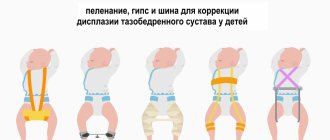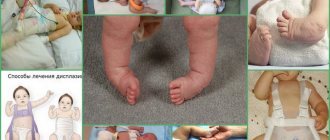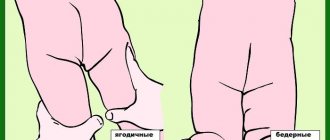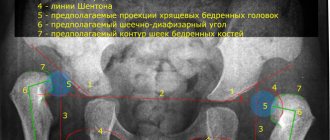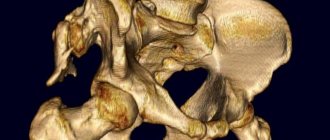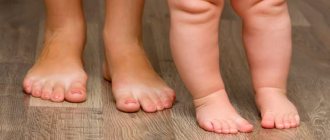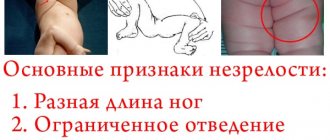Hip dysplasia is a congenital developmental defect when the head of the hip joint is displaced from its normal position. In infants, the joint capsule is flat; the slightest damage leads to subluxations and dislocations. If the situation is not corrected in time, the child is doomed to disability.
Treatment of hip dysplasia is long and painstaking. Includes the use of various orthopedic devices, massage, exercise therapy, physiotherapy, and in severe cases, surgery.
A component of the treatment complex available at home will be paraffin therapy, which increases the effect of other procedures performed.
Why paraffin
Since ancient times, heat has been used to treat a lot of diseases. The world first heard about paraffin therapy in 1902. The method is still relevant today.
Paraffin has high thermal conductivity and heat capacity. It is convenient to use the material to warm up diseased joints; when the substance cools, it forms a kind of capsule, the shell of which is warm, and the contents are hot inside. You can keep the layer on your body for a long time without getting burned, evenly warming the affected area. Human skin can withstand paraffin temperatures of 60-70 degrees without burning.
Therapeutic paraffin
Warm application causes the skin to release sweat, preventing it from evaporating, creating a sauna effect on a specific area. Along with sweat, many toxic substances come out.
During the procedure, blood microcirculation increases, lymph and fluids drain out, the active components penetrate the sore spot, relieve inflammation and promote the regeneration of joint tissues. As it cools, paraffin loses up to 10% in volume, tightening the areas of application. As a final result, after a course of treatment, the joint develops and the head moves into the correct position.
When a doctor prescribes paraffin as a component of treatment for hip dysplasia, there is no need to buy a package of candles and melt them. You will get serious skin irritation! Highly purified white paraffin is used for cosmetic and medical purposes. Yellow is also suitable for applications. Sold in pharmacies or specialized centers.
Ozokerite, a mountain wax, is often used together with paraffin. The product contains mineral oils, resins, asphaltenes, and carbon dioxide. It looks like a dark-colored substance of petroleum origin with a distinct odor of kerosene. When heated, it is highly fluid and, together with paraffin, reaches the desired consistency.
When treating dysplasia with heat, adding ozokerite to the paraffin mixture enhances the effect due to the high content of natural bioactive substances.
Treatment of hip dysplasia
The younger the child, the easier it is to treat dysplasia. For example, in babies up to 3 months old, the joint can recover on its own, provided that the children's legs are always in the right position. That is why the main method of treatment in the early stages of the disease is free swaddling, in which the baby’s legs are spread apart.
But if treatment and prevention were not carried out in the first 3 months of life, then more serious and long-term treatment will be required for a complete recovery. The danger of unrecognized dysplasia is that the baby’s bones, due to age, are very flexible and susceptible to various deformations. The baby’s skeleton is constantly growing, but this same factor also explains his greater tendency to developmental defects. Most joints (including the hip) in the first months of life consist mainly of cartilage tissue, and any disturbances in the connection of the bones lead to the formation of serious deformities. To stop the progression of the disease, it is necessary to return all parts of the joint to their normal position. For this, various types of abductor splints (listed above) are usually used; they hold the baby’s legs in the desired position. After some time, the joint gradually “fixes” and begins to develop correctly.
At the age of 2-3 months, small patients with suspected dysplasia are usually not given x-rays, since even with an unconfirmed diagnosis it is customary to prescribe a preventive course of treatment: the use of soft spreading splints, a course of therapeutic exercises (with abductor-circular movements) and massage of the gluteal muscles . Splinting and massage work well with physical therapy techniques to speed up recovery.
Types of paraffin applications
Application – impact on the affected area by applying a carrier substance or energy. When treating hip dysplasia, we are talking about applying heat to the affected area. Usually performed before a massage and electrophoresis session, it warms up well and prepares muscles and joints.
Paraffin applications
Paraffin applications are applied in the described ways:
- Cuvette. The idea is to melt the components and then pour the mass into a wide container with a flat bottom, where the substance remains until it thickens. Then it is carefully lifted and applied to the painful area.
- Gauze multi-layer applications. Gauze folded in several layers is soaked in a melted mixture of paraffin and ozokerite and applied to the desired location. Slightly dry. The process is repeated 3-4 times, you will need 4 pieces of fabric.
- Layering. The mass is applied using a wide brush gradually, layer by layer.
When treating hip dysplasia, the first method is usually used, as it is simpler and less traumatic. You need a lot of procedures, they are carried out at home, with the second and third methods it is easy to miscalculate the temperature and get burned. The methods are used during physiotherapy sessions in specialized institutions.
Contraindications for paraffin therapy
The use of paraffin is prohibited if tuberculosis or septic inflammation of the joints is diagnosed.
This also includes tumors in the joints or surrounding tissues, as well as a pathological tendency to bleeding, for example, in hemophilia.
Paraffin should not be used for diseases of internal organs, such as cirrhosis, atherosclerosis, arterial hypertension, epilepsy, or significant depletion of the body.
Also, paraffin therapy is incompatible with contrasting effects of heat and cold, for example, it is not recommended to swim in the pool or sea on the same day, or take cold baths and showers.
Technique for preparing a cuvette paraffin application
For the procedure you will need 500 g of cosmetic paraffin, 250 g of ozokerite and a bottle of Vaseline oil. Some manufacturers add oil to paraffin, the effect is indicated on the packaging. The components are easy to purchase at the pharmacy. Don’t forget the thick oilcloth used to form the mold for cooling the mass.
It is better to melt the ingredients in a water bath. If you simply put it in a saucepan and put it on fire, it will begin to emit choking smoke and even ignite.
Preparation for cuvette application
Setting up a water bath is simple:
- A large aluminum or enamel pan is filled about a third with water;
- Paraffin and ozokerite crumble into a smaller container, and Vaseline oil is poured. It is better not to cover it with a lid to avoid the accumulation of condensation entering the mixture;
- The small container is almost completely immersed in the larger one, preventing water from flooding;
- The structure is placed on low heat, stirred periodically with a wooden stick.
The melting process takes an hour. During this time, you need to prepare the form for filling: the edges of the oilcloth are raised, forming sides, and secured at the ends with clothespins or paper clips. To be on the safe side, it is better to place it in a baking tray or a suitable sized dish.
The melted mixture is poured into the mold in a layer of about 1 cm. After 10-12 minutes. the mixture will begin to “set.” You can carefully pierce the middle with a toothpick and check whether the liquid inside has thickened. Otherwise, the crust may break through, and hot paraffin will cause a severe burn. The temperature of the resulting formation is 37-38 degrees, liquid should not sweat out from the surface. The resulting “cake” is separated from the mold, ready for application.
Symptoms
First of all, pay attention to the symmetry of the skin folds of the thigh, bearing in mind that with bilateral pathology this sign may not be visible. Asymmetry of skin folds is more informative in children older than 2-3 months of age. Skin folds in congenital hip dislocation are located at different levels and differ in depth and shape. The gluteal, popliteal and inguinal folds are of diagnostic importance. On the subluxated or dislocated side they are deeper and there are more of them. This symptom is observed in half of sick children and in itself has no diagnostic value. Adults should pay attention to such problems as: the manifestation of sharp pain in the hip area when walking or at rest, the inability to constantly move the limbs, pronounced shortening of the limb, lameness when moving. Often, adult patients may not realize that they have hip dysplasia. Only in a situation where joint dysfunction reaches a critical point does a person begin to suspect the presence of a problem. High elasticity of the ligaments and hypermobility of the joints in most cases helps in sports and does not cause discomfort, so the disease can be recognized only after an ultrasound or x-ray examination. If a congenital dislocation is not corrected in time, it can lead to the formation of a defective joint, shortening of the limb and impaired muscle function.
The procedure for a child
Treatment of hip dysplasia is successful if started from the first days of a child’s life. This is possible with timely diagnosis using an X-ray machine (more precisely than ultrasound). The doctor, in addition to wearing special devices, will immediately prescribe a number of treatment procedures. Paraffin therapy is painless and even pleasant for the baby.
To carry out applications for hip dysplasia, the cuvette method is used. Moreover, at home and in medical institutions.
During the melting of the components, it is necessary to prepare the location for the session. First, a warm blanket or flannelette blanket is spread on a flat surface, then a sheet on which a paraffin “cake” is placed. If there are concerns that the paraffin is too hot, for the first time, for insurance purposes, place a thin diaper on top.
The child is placed with his buttocks on the warm mixture, in the center. Not higher, otherwise the kidneys will get warm. The genitals should also not be heated. The layer fits the hips in a “C” shape. Next, you need to tightly wrap the heated area with a warm diaper so that the paraffin does not move.
If the baby is under 6 months old, the procedure should take no more than 6-7 minutes. After six months, bring it to 10 minutes. Many parents do 20, the doctor has the right to regulate the duration. Usually 10-20 sessions are prescribed (every other day), then a month-long break.
After removing the paraffin, the skin will be slightly damp and red - this is a normal reaction. It is permissible to treat with special oil or lotion.
Children tolerate the manipulation calmly; there may be some excitement in the first 2 minutes. During the warming up process, try to distract the child with games, rock him in your arms, without provoking unnecessary movements.
After the session, it is useful to do a massage or light therapeutic exercises. Warm joints and ligaments are capable of a greater range of motion, which helps the articular head to occupy the correct position.
At the end of the procedure, the paraffin is collected into a lump and placed in a container with a lid. It is permissible to use several times, heating in a water bath for 15-20 minutes. If elasticity is lost, 20% of fresh substance is added. It is recommended to periodically strain the hot mixture through a cotton cloth.
Hip massage
Observation of hip dysplasia
By the end of the first year of life, all babies again undergo a routine examination by an orthopedist. Then several groups are conventionally distinguished:
- children with dysplasia who have not received any treatment;
- children with severe, poorly correctable forms of dysplasia;
- babies with residual symptoms of dysplasia.
Each child, if necessary, is prescribed further treatment - conservative (massage, gymnastics, physiotherapy) or surgical intervention. If the diagnosis of “irreducible dislocation” is confirmed, then surgery is necessary - open reduction of the joint under anesthesia.
